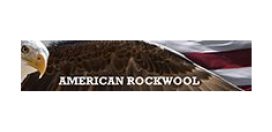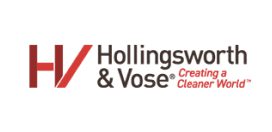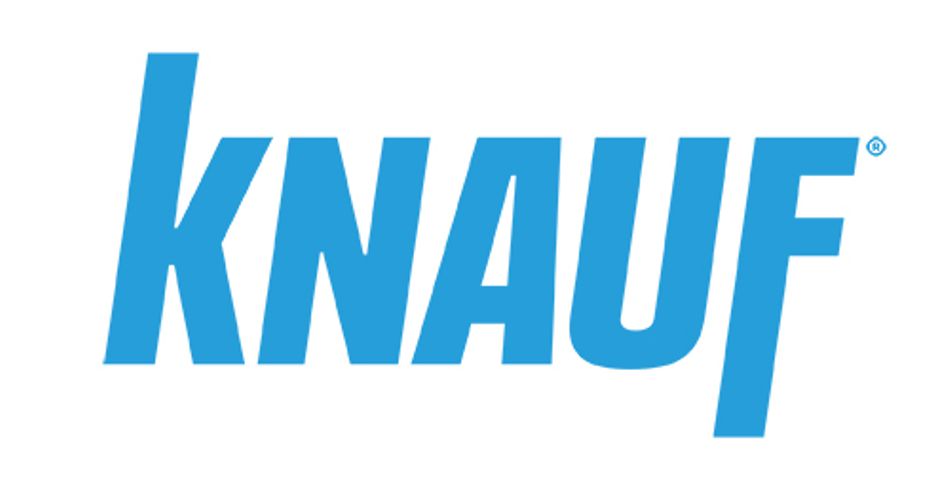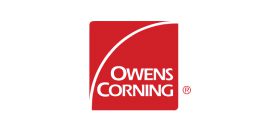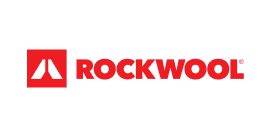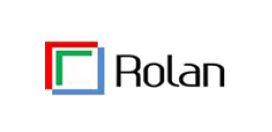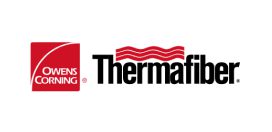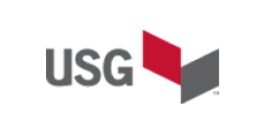The Facts About Airborne Fibers and Glass Fiber Air Transmission Systems (AH114)
–+This guide highlights studies conducted over a period of 35 years that show fiberglass duct liner and fiberglass duct board exhibit little to no fiber erosion on surfaces in typical HVAC ducts.
Fiber Taxonomy for Synthetic Vitreous Fibers (N172)
–+This review addresses the taxonomy of synthetic vitreous fibers used for thermal and acoustical insulation.
Acoustical Performance of Wall Cavity Insulation Products (BI507)
–+Summarizes research findings comparing the Sound Transmission Class (STC) and Outdoor/Indoor Transmission Class (OITC) values of wall assemblies insulated with unfaced fiberglass, mineral wool, open cell foam and closed cell foam.
The report concludes that the variation in results across wall assemblies using different insulation types was minimal.
An Essential Component of Indoor Environmental Quality…Fiberglass HVAC Insulations (AH110)
–+Discusses a number of issues facing the building owner and facility managers including facts about insulation and indoor environmental quality, HVAC system maintenance, mold growth and the use of biocides and encapsulants, fiber erosion, and an update on health and safety research.
Cleaning Fibrous Glass Insulated Duct (Ductboard / Duct Board) Systems – Recommended Practices (AH122)
–+This manual shows duct cleaning contractors how to identify the different types of insulated air ducts, how to open each type for access by cleaning equipment and personnel, how to close and seal openings after cleaning.
Includes guidelines on determining when insulated ducts need to be cleaned, how to avoid damaging fibrous glass surfaces. Pre- and post-cleaning checklists are included. A helpful tool for the professional duct cleaning contractor.
Dispersal of Fungal Spores From Three Types of Air Handling System Duct Material (RP046)
–+Discusses exposure to airborne microorganisms in indoor environments may result in infectious disease or elicit an allergic or irritant response.
(Mark P. Buttner, Patricia Cruz-Perez, Paula J. Garrett and Linda Stetzenbach)
Dr. John Hadley: A Toxicologist’s Review of Fiber Glass and Mineral Wool Insulation Fibers
–+Dr. John Hadley, a widely respected and experienced toxicologist, provides an overview of the research conducted over forty years period on fiber glass and mineral wool insulation fibers and the conclusions reached by such authoritative bodies as the International Agency for the Research on Cancer (IARC).
Facts #36: Facts About Using Sealants in Fiberglass Air Handling Systems (AH125)
–+Discusses issues and considerations regarding the use of biocides and encapsulants during HVAC system cleaning and maintenance specifically where fiberglass air duct insulations are involved.
Facts #52: Glass Fiber Air Transmission Systems: Preventing Moisture Accumulation in Ducts (AH107)
–+Discusses sources of moisture in the home and provides information on ways to prevent water accumulation in ducts located in unconditioned spaces, the problems associated with moisture accumulation, and the means of prevention.
Facts #62: Health and Safety Facts for Fiberglass (N040)
–+This Fact Sheet presents information on the health and safety research related to fiberglass insulation, including the recent International Agency for Research on Cancer (IARC) review that resulted in an improved classification of these products. (NO61)
Facts #62: Información sobre salud y seguridad de la fibra de vidrio (N040SP)
–+Spanish language version Fact Sheet that presents information on the health and safety research related to fiberglass insulation, including the recent International Agency for Research on Cancer (IARC) review that resulted in an improved classification of these products. (N040SP)
Facts #63: Health and Safety Facts for Rock and Slag Wool (N041)
–+This Fact Sheet presents information on the health and safety research related to rock and slag woolinsulation, including the recent International Agency for Research on Cancer (IARC) review that resulted in an improved classification of these products.
Facts #78: Exposure Data For Fiberglass, Rock Wool & Slag Wool (N062)
–+This document helps contractors and workers determine the level of potential exposure to fiberglass, rock and slag wool fibers for particular work tasks.
Facts #82: Mineral Fiber Insulation Products for Commercial and Industrial Applications: Codes and Standards for Insulation Used on Pipes (CI225)
–+This Fact Sheet addresses the importance of specifying commercial and industrial pipe insulation that meets prescribed codes and standards for quality and safety, and illustrates the consequences of using insulation that does not meet those standards.
Facts #83: Spray Foam Insulation Industry and Federal Agencies Agree On Product Stewardship Measures (N066)
–+This Fact Sheet discusses issues surrounding the safe use of spray foam insulation.
Facts #88: Health End Points Fact Sheet – Skin Irritation (NO95)
–+Fiberglass and rock and slag wool fibers can cause temporary and reversible mechanical irritation, but they are not required to carry the “irritant” warning label. This fact sheet details why.
Fiberglass HVAC Insulation – Know the Facts (12 Minute Presentation)
–+12 minute audio visual presentation on fiberglass insulation products designed for the HVAC system for residential and commercial buildings.
The presentation focuses on:
- The Benefits of Insulated AirDucts
- Health & Safety Safety
- Mold Moisture & Cleanability
- Performance & Product Testing
- Codes & Standards
Fiberglass Insulation: A Guide to Better Indoor Air Quality (N138)
–+Fibrous Glass Residential Duct Construction Standards (Ductboard / Duct Board)- Third Edition (AH119)
–+Based on the 144-page Fibrous Glass Duct Construction Manual, this 102-page version focuses on fabrication and installation of fiberglass duct board systems in residential situations (single and multi-family).
Illustrates and describes the two basic types of residential duct systems: extended plenum and radial. Depicts methods of conducting straight duct sections and simple fittings, approved closure systems. Includes job inspection checklist. Third Edition, 2002
Glass Fiber Air Transmission Systems: Cleaning Fibrous Glass or Lined Sheet Metal Ducts (AH112)
–+Information on cleaning, sanitizing and sealing fiberglass and fiberglass lined ducts.
HSPP – A Voluntary Program Designed to Assure Greater Worker Protection (N030)
–+This HSPP folder contains eight Fact Sheets that describe the program overview and its origins, recommended PEL for SVFs, comprehensive work practices, recommended respiratory protection, exposure database, and implementation and communication.
Harvard Demonstrates Public Health Benefits of Increased Insulation (NAIMA036)
–+Two recent studies by Harvard show that increasing insulation in your home lowers air pollution and improves public health.
This full color brochure provides a summary of these studies.
Integrating Air Pollution, Climate Change, and Economics in a Risk-Based Life-Cycle Analysis: A Case Study of Residential Insulation (RP066)
–+This article discusses reductions in particulate matter air pollution, greenhouse gas emissions, and personal income from increased thermal insulation.
Integrating Risk Assessment and Life Cycle Assessment: A Case Study of Insulation (RP060)
–+Increasing residential insulation can decrease energy consumption and provide public health benefits, given changes in emissions from fuel combustion.
In this article, researchers estimate the net public health impacts of increasing residential insulation for new housing from current practice to the latest International Energy Conservation Code (IECC 2000).
Maximum Thickness Restrictions for Spray Foam (RP067)
–+This article contains a detailed explanation of thickness restrictions for spray foam insulation.
The reader will also learn about spontaneous combustion and “advice to prudent builders”. Reprint from Energy Design Update April 2008.
Monitoring Airborne Fungal Spores in an Experimental Indoor Environment to Evaluate Sampling Methods and the Effects of Human Activity on Air Sampling (UNLV Study) (RP022)
–+Reprinted from Applied and Environmental Microbiology American Society for Microbiology, Vol. 59, No. 1.
Aerobiological monitoring was conducted in an experimental room to aid in the development of standardized sampling protocols for airborne microorganisms in the indoor environment. The objectives of this research were to evaluate the relative efficiencies of selected sampling methods for the retrieval of airborne fungal spore and to determine the effect of human activity on air sampling.
NAIMA Product Stewardship Program Pocket Folder (N052)
–+This folder contains six Fact Sheet that describe the NAIMA Product Stewarship Program and its origins, recommended PEL for SVFs, comprehensive work practices, recommended respiratory protection, exposure database, and implementation and communication.
Play It Smart, Play It Safe (N049)
–+This worker training tool is a 15-minute DVD designed to provide important information in a fun and entertaining way to contractors and workers who handle fiberglass, rock and slag wool (synthetic vitreous fiber) insulation products.
The DVD features two insulation installers, fresh off the court from their weekly pick-up basketball game. DVD has both English and Spanish languages.
Play it Smart, Play it Safe (Spanish) (N029)
–+Este video de 15 minutos es un entrenamiento que contiene información importante y divertido para obreros que se ocupan de los productos de aislamiento fibrosos.
El video ofrece dos instaladores de aislamiento que acaban de jugar baloncesto en su jeugo semanal.
Preserving the Integrity of Environmental Claims for Building Materials (NAIMA035)
–+This article helps building material manufacturers adhere to the Federal Trade Commission’s (FTC) Guides for the Use of Environmental Marketing Claims.
The Fungi: How They Grow and Their Effects on Human Health (RP032)
–+A primer on how fungi are formed, how they spread in buildings, and how individuals react through allergy symptoms, irritation, and toxicoses due to exposure. (Harriet A. Burge, PhD)
The Public Health Benefits of Insulation Retrofits in Existing Housing in the United States (RP061)
–+This study from Harvard University’s School of Public Health shows that if the 46 million existing single-family homes in the United States that have inadequate insulation were retrofitted with additional insulation to meet the 2000 IECC, the benefits would include 240 fewer premature deaths, 6,500 fewer asthma attacks and 110,000 fewer restricted activity days per year.
This translates into a potential savings of $1.3 billion per year in averted costs such as health care, and $5.9 billion per year in additional savings associated with reduced energy consumption, paying back the initial cost of the insulation in about six years.
Working Smart with Fiberglass, Rock Wool and Slag Wool Products (N059)
–+Compliments the Play It Smart, Play It Safe video presentation.
Includes background on NAIMA’s Product Stewardship Program and reviews the complete list of recommended work practices for fiberglass, rock wool and slag wool insulation products that were developed under the Health and Safety Partnership Program and endorsed by the U.S. Occupational Safety and Health Administration (OSHA).
Working Smart with Fiberglass, Rock Wool and Slag Wool Products (N059SP)
–+Spanish Language Version. Compliments the Play It Smart, Play It Safe video presentation.
Includes background on NAIMA’s Product Stewardship Program and reviews the complete list of recommended work practices for fiberglass, rock wool and slag wool insulation products that were developed under the Health and Safety Partnership Program and endorsed by the U.S. Occupational Safety and Health Administration (OSHA).
Working Smart with Fiberglass, Rock Wool and Slag Wool Products – Recommended Work Practices for the Installation of Synthetic Vitreous Fibers (SVF) (N027)
–+Compliments the Play It Smart, Play It Safe video presentation.
Includes background on NAIMA’s Health and Safety Partnership Program (HSPP) and reviews the complete list of recommended work practices for fiberglass, rock wool and slag wool insulation products, as developed under the HSPP and endorsed by the U.S. Occupational Safety and Health Administration (OSHA).
Working Smart with Fiberglass, Rock Wool and Slag Wool Products – Recommended Work Practices for the Installation of Synthetic Vitreous Fibers (SVF) (Spanish) (N027SP)
–+Compliments the Play It Smart, Play It Safe video presentation.
Includes background on NAIMA’s Health and Safety Partnership Program (HSPP) and reviews the complete list of recommended work practices for fiberglass, rock wool and slag wool insulation products, as developed under the HSPP and endorsed by the U.S. Occupational Safety and Health Administration (OSHA).

